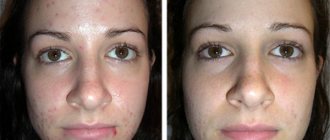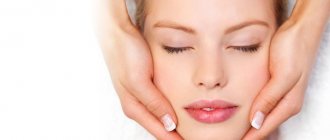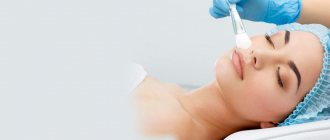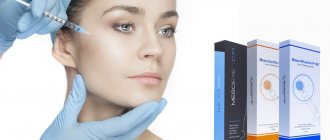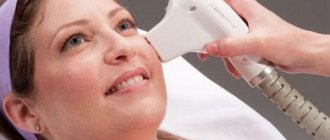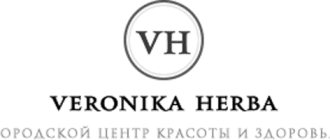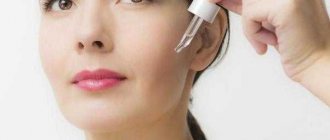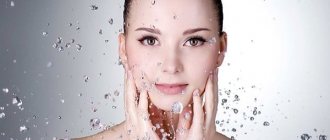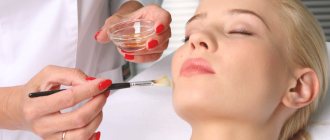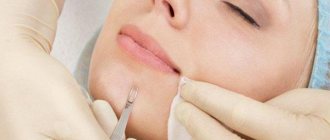Updated: 04/23/2021 15:18:25
Expert: Natalya Borisovna
Cosmetology offers many different procedures that help improve the condition of the skin, not just giving it a more well-groomed appearance, but also making it younger and healthier. Facial cleansing and peeling are some of the most popular non-surgical treatments. Many people mistakenly equate them, but cleaning and peeling are not exactly the same thing, sometimes these procedures are even combined with each other. What is the difference and which is better? More on this later.
It can be performed at any age
- Facial cleansing
, unlike peeling, can be used at any age: including for the treatment of teenage pink acne. - Peeling
, in turn, is allowed only from 14 years of age, and fresh pustules in this case are contraindications. Moreover, deep phenol peeling will not be prescribed at all before the age of 40-50, because it affects the deepest layers of the skin (with the exception of the thinnest cell growth zone, which is responsible for tissue restoration).
There is no chemical: only mechanical
- Cleaning
is performed by a cosmetologist using his fingers or using special devices, i.e. mainly mechanically, without any multi-acid compounds. - Peeling
also involves exfoliating the skin, but using chemicals. Even if the names of the procedures are the same, the difference between them will still remain: for example, ultrasonic cleaning will differ from ultrasonic exfoliation precisely because of the use of additional chemicals.
We recommend: 7 REASONS TO CONSIDER PEELING HARMFUL
Only gets rid of dirt and rashes
- Facial cleansing
solves a limited range of problems in its “area”: it is recommended for people with a large number of pimples, blackheads, comedones, sebaceous plugs and post-acne, as well as a tendency to increased oily skin. - Peeling
is also suitable for those who suffer from all kinds of age spots, dull tone and loss of skin elasticity, as well as age-related changes. Due to a deeper effect (together with acids), exfoliation combats a greater number of imperfections and can even replace a circular facelift.
What's better
It is definitely difficult to say unequivocally what is better, mechanical cleansing or exposure to acids, since each manipulation has its own specific indications.
Thus, peeling is recommended for such skin problems as age spots (can be seasonal or age-related), enlarged pores, post-acne scars, acne, unevenness and roughness of the surface of the epidermis, dulling of skin tone, the manifestation of the first age-related changes, loss of elasticity.
Why can our articles be trusted?
We make health information clear, accessible and relevant.
- All articles are checked by practicing doctors.
- We take scientific literature and the latest research as a basis.
- We publish detailed articles that answer all questions.
Indications for the use of professional cleaning are:
- copious sebaceous discharge;
- black dots ;
- acne ;
- sagging skin;
- pore expansion .
To get the most effective result, before choosing one or another cosmetic procedure, you need to consult with a specialist who, after examining the skin, taking into account all the features, will select the most suitable solution to the problem.
Cleaning is done once a month, peeling – once a week
- facial cleansing
regularly, like going to the gym: you won’t be able to “pump up” your muscles for years to come. So doctor Elena Kudashkina (Nizhny Novgorod) recommends doing facial cleansing every month. - Peeling
, according to the expert, is carried out in a course, on average once a week. And, of course, the goals and objectives of both methods are completely different, sometimes complementary.
Doctor ELENA KUDASHKINA: “It is incorrect to compare such different procedures”
Chemical peels can sometimes be combined with cleansing, because cleansing is still a mechanical effect on the skin, exfoliation using ultrasound or scrubs. Peeling is usually a chemical effect on the skin. Often their effects are combined. But it is incorrect to compare these two methods, because they are so different. It's like comparing what is better - drinking water or eating meat. Everything is good in its own way, depending on the specific situation.
Price
Prices for peeling or facial cleansing procedures vary and depend on the level of professionalism of the cosmetologist, the components, preparations, and equipment used, which best reflects the price-quality ratio.
Prices for peeling or facial cleansing procedures vary and depend on the level of professionalism of the cosmetologist, the components, preparations, and equipment used.
The cleaning procedure costs in the range of 350-7500 rubles.
The price of facial peeling can be 650-15,000 rubles.
When choosing a place for the procedure, rely on your financial capabilities and customer reviews.
TYPES OF CLEANING (+TABLE)
Let's look at what types of facial cleansing there are in a salon and what their pros and cons are:
| TYPE OF CLEANING | WHO IS SUITABLE FOR? | WHO IS NOT SUITABLE FOR? |
| Manual (mechanical) |
|
|
| Ultrasonic |
|
|
| Vacuum |
|
|
We recommend: PEELING AND DEMODECOSIS: getting rid of unnecessary roommates
Manual or Manual (Mechanical)
This is manual facial cleansing by a cosmetologist, the most popular and accessible of all. In itself, it is a fairly effective measure, but at the same time very painful. This technique can easily remove even the deepest stains.
Involves the use of basic cosmetic tools:
- Uno spoons (c) are a device that helps to quickly and effectively cleanse the skin of all kinds of acne and comedones of any type;
- All kinds of special brushes;
- Vidal steel rod (b) with a sharp end, with the help of which pimples and closed inflammations are opened before their removal;
- Metal loop (d) , which perfectly removes sebaceous plugs and the contents of hair follicles.
Makes it easy to deal with a wide variety of stains: from blackheads to painful pimples.
* a) Cosmetology lamp (+ Magnifying glass); b) Vidal needle; c) Uno slotted spoon; d) Loop for cleaning the face; e) Vapazon (Steaming).
Ultrasonic cleaning
Ultrasonic cleaning is performed by a specialist using a special scrubber, which sends ultrasonic waves into the deep layers of tissue and thus opens the pores, cleansing them, and removes the top layer of the epidermis.
In its action, this cosmetic manipulation is similar to chemical peeling, which also exfoliates different layers of the skin. Only in the latter case, unlike ultrasonic cleaning, all kinds of acids of different concentrations are used.
The method copes well with small blackheads and surface impurities, and also stimulates the renewal of the epidermis through a kind of soft tissue massage.
Ultrasonic facial cleansing
Vacuum cleaning
In this technique, the cosmetologist uses a special device with a tube-shaped attachment at the end. With its help, during skin treatment, sebaceous deposits, residues of cosmetics and other impurities, as well as dead cells are effectively removed from steamed pores. This procedure resembles superficial exfoliation, only without the use of acids.
The method is not too painful, but is effective for solving problems associated with superficial contamination of the face, swelling and poor circulation.
…and others
There are other methods: for example, cleaning with electric current (called “galvanic” or “disincrustation”). Treatment of this type is carried out by a cosmetologist using weak galvanic microcurrents. Thanks to this, the pores expand, the unnecessary contents in them are destroyed and all the dirt comes out, transformed during the process into a soap solution.
We recommend: All-season PHYTIN PEELING - stellar rejuvenation for skin with rosacea
Before the session, a special gel must be applied to the treated area, which allows the device to better glide over the surface and ensure maximum contact with the skin.
Laser resurfacing
Laser resurfacing is a hardware method that involves evaporating dead cells from the upper layers of the dermis along with stimulating collagen production.
Lasers are divided into fractional and ablative.
Fractional grinding
– creating a grid of thermal points on the face using a laser. The skin around these points remains untouched, so the recovery process begins faster.
Ablative laser
acts on a par with deep chemical exfoliation. Procedures using it are carried out mainly to get rid of scars and stretch marks on the body, because this is a painful and long process.
Thanks to laser resurfacing, you can get rid of fine and deep wrinkles, improve blood circulation, restore a fresh complexion, and get rid of age spots.
Fractional laser peeling does not cause pain, is carried out quickly and minimally injures the dermis.
Proper care after the procedure helps to achieve the desired effect.
Recommendations after the procedure for the next 7-10 days:
- do not visit the bathhouse, sauna, swimming pool;
- do not sunbathe;
- do not remove crusts from the face, they will disappear on their own during the recovery process;
- minimize physical activity;
- give up makeup.
FAQ
What to prefer depending on your skin type?
- Cleansing
is suitable primarily for those with oily and problematic skin. But it is not prohibited for those who have a normal and combined type. - Peeling
is applicable to any skin type and is especially useful for rejuvenation.
Is it possible to do it at the same time?
These two cosmetic procedures complement each other perfectly, but, nevertheless, they should be carried out simultaneously only on the recommendation of a cosmetologist and with a certain time interval between procedures, so as not to injure the face again. What to do first is also determined by the specialist, depending on the desired effect.
Which method should I use first?
When answering this question, a cosmetologist takes into account the condition of the patient’s skin and the task at hand.
If the doctor decides to do peeling first, and only then cleanse the face, then in this way he focuses on maximum cleansing - in order to better remove impurities and better exfoliate the top layer of skin.
If peeling completes the treatment, this sequence is chosen to consolidate the result and maintain the effect for a longer time.
Contraindications for carrying out
Contraindications for facial cleansing are:
- hypertonic disease;
- psoriasis and eczema;
- epilepsy;
- herpes;
- dry, sensitive skin;
- menstruation period;
- mental illnesses;
- individual intolerance.
Facial cleansing should not be done during menstruation.
Peeling cannot be performed under the following conditions:
- pregnancy and lactation;
- hypertension;
- heart and kidney diseases;
- infectious diseases;
- increased skin sensitivity;
- psoriasis and eczema;
- herpes;
- increased body temperature;
- mental illnesses;
- epilepsy;
- individual intolerance.
Whatever procedure you choose (peeling or facial cleansing), it’s up to you to decide what’s best for your skin. However, the cosmetologist is obliged to warn you about the possible consequences.
The cosmetologist is obliged to warn you about the possible consequences.
Possible consequences are as follows:
- peeling of the skin;
- redness;
- dehydration of the epidermis;
- scar formation;
- swelling;
- increased skin sensitivity.
Find out about: Eyebrow microblading: before and after photos
